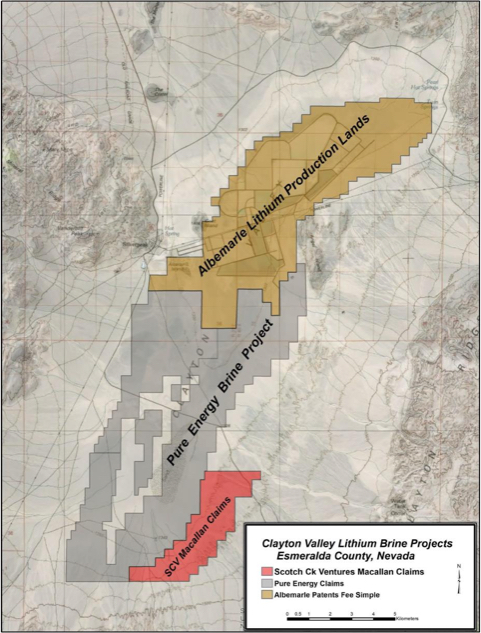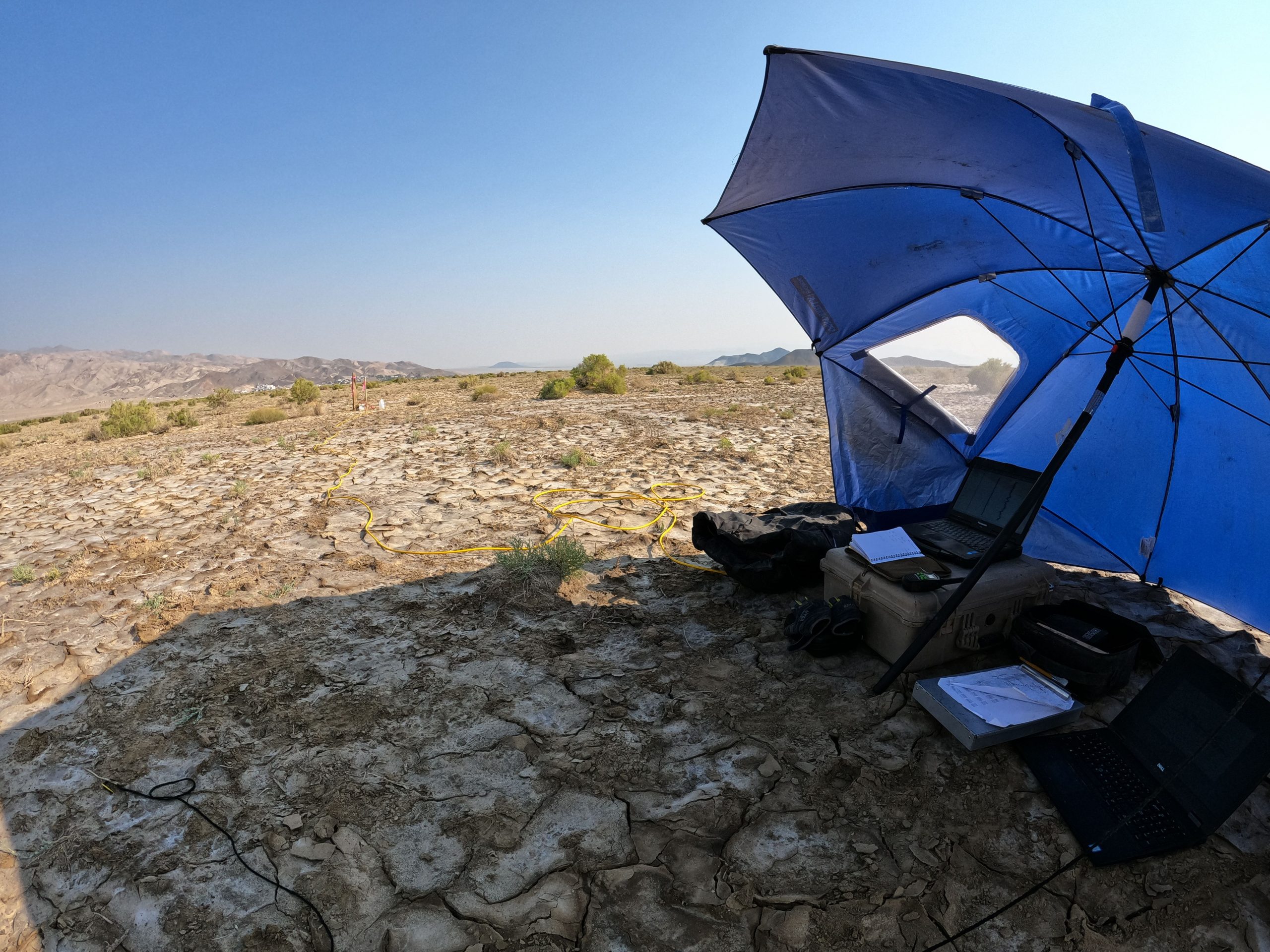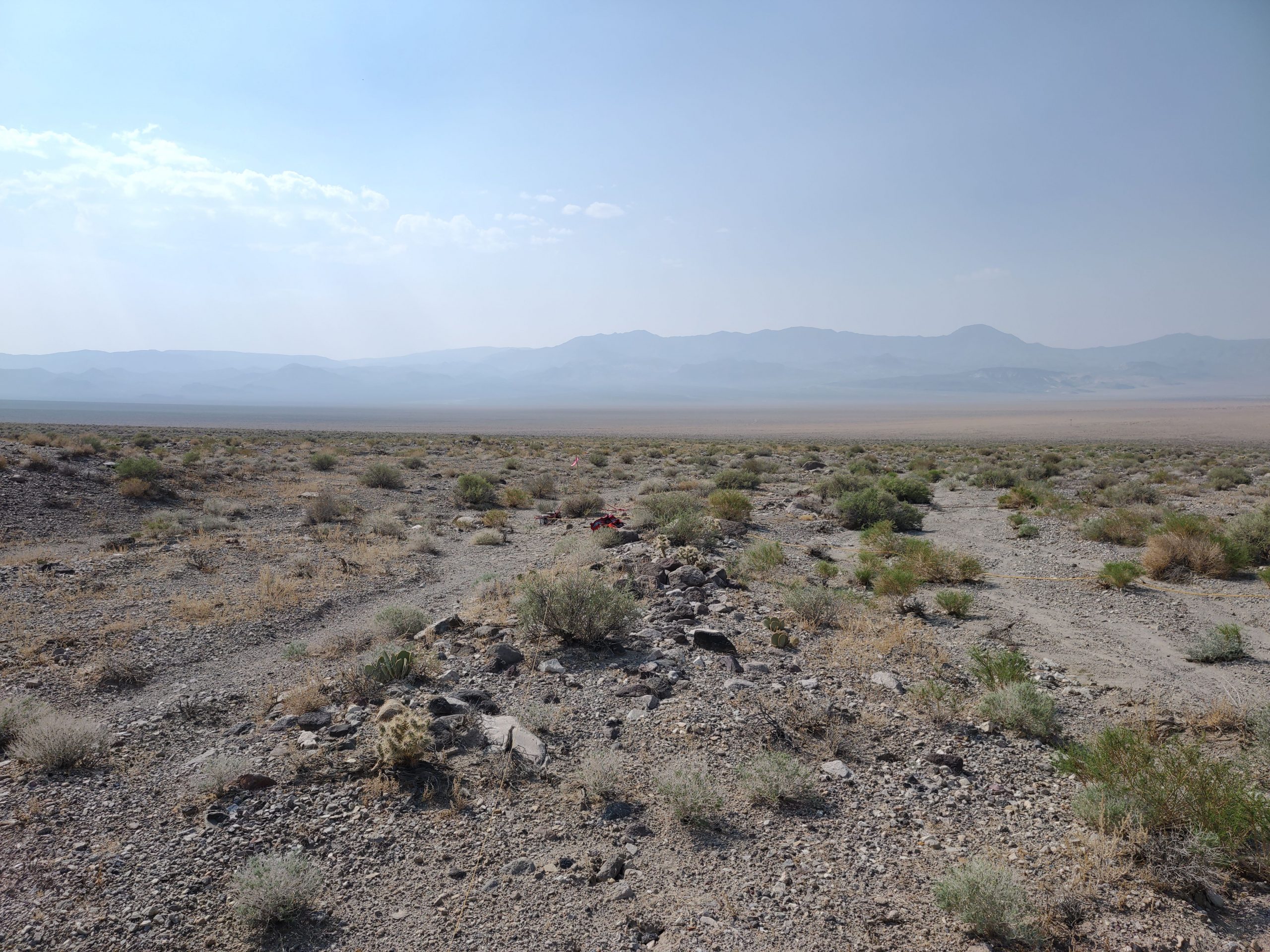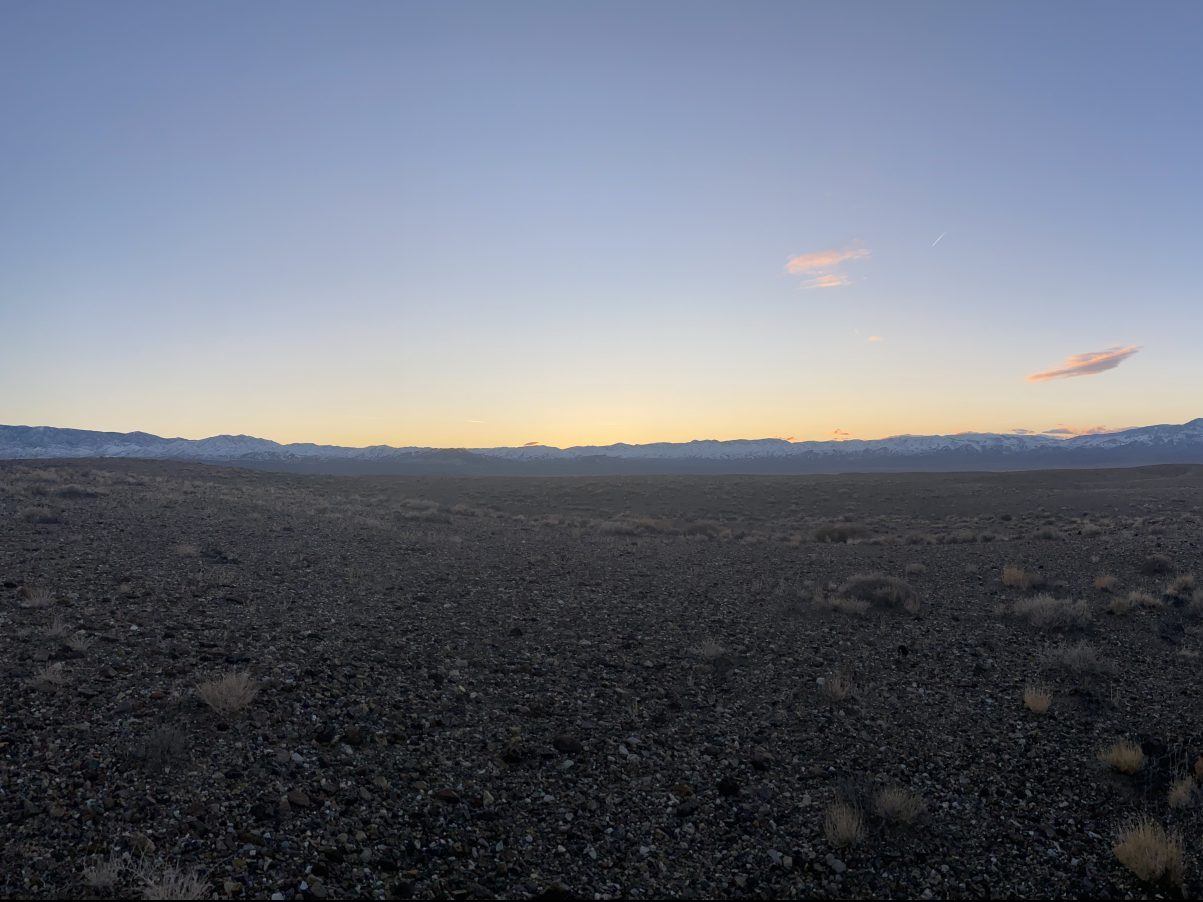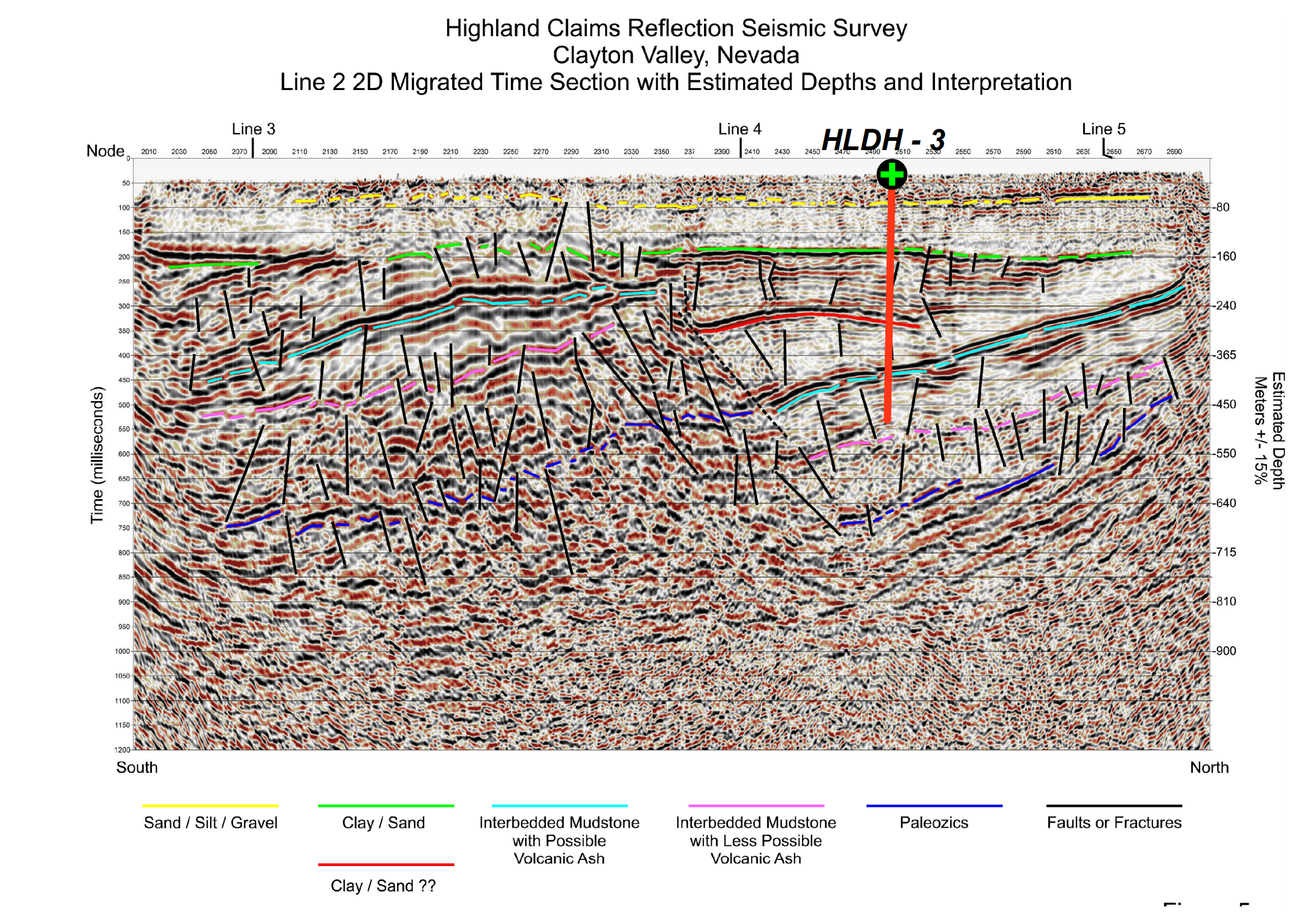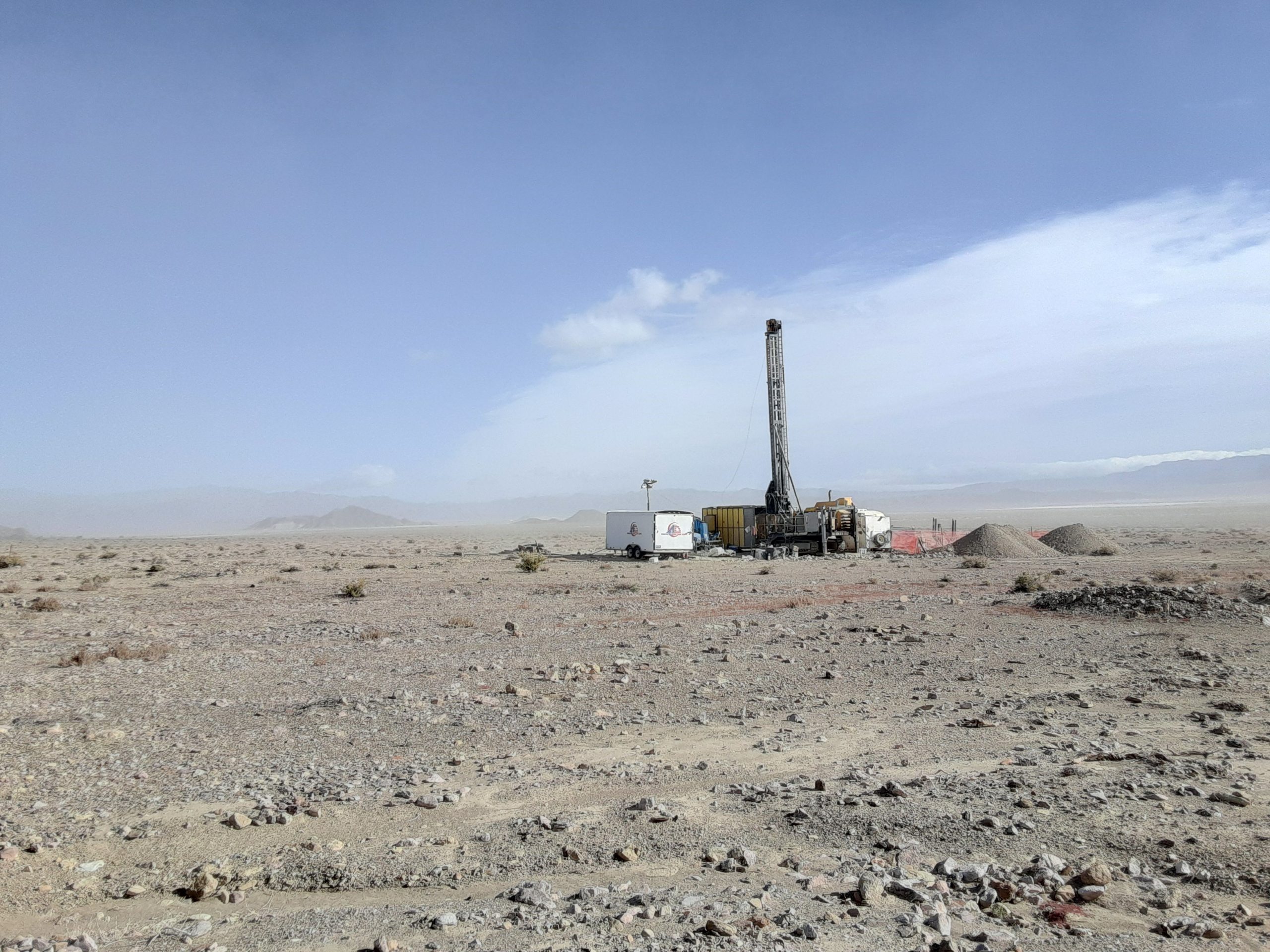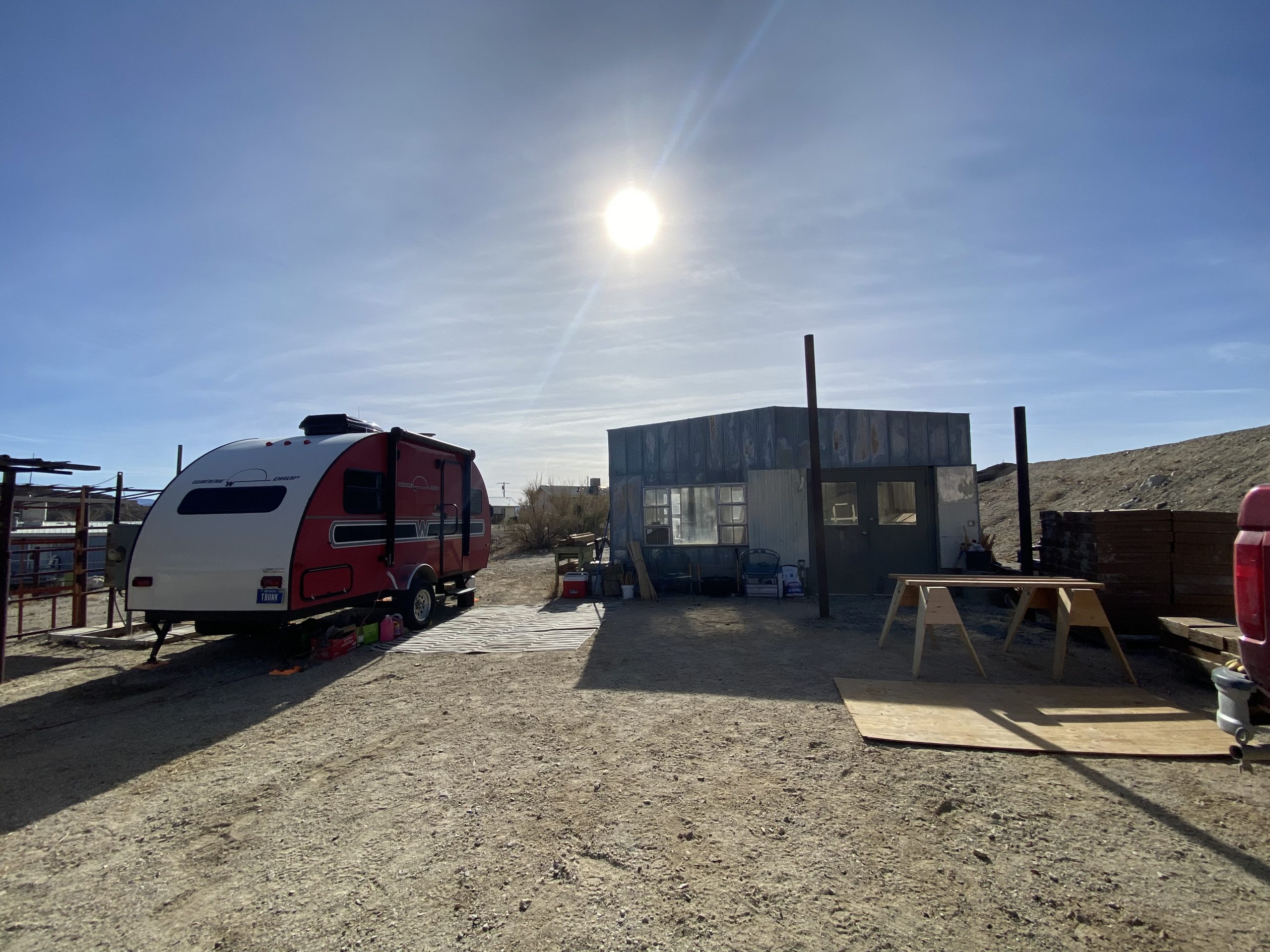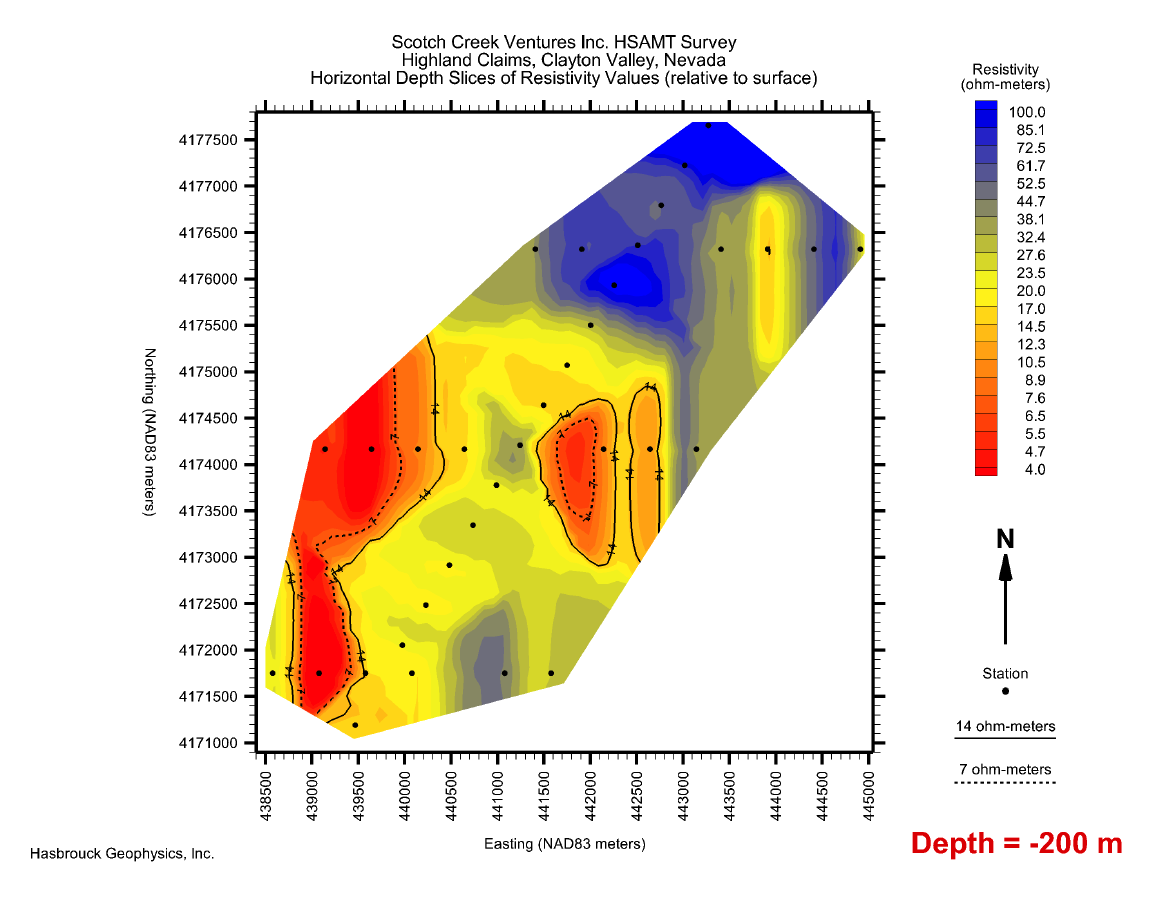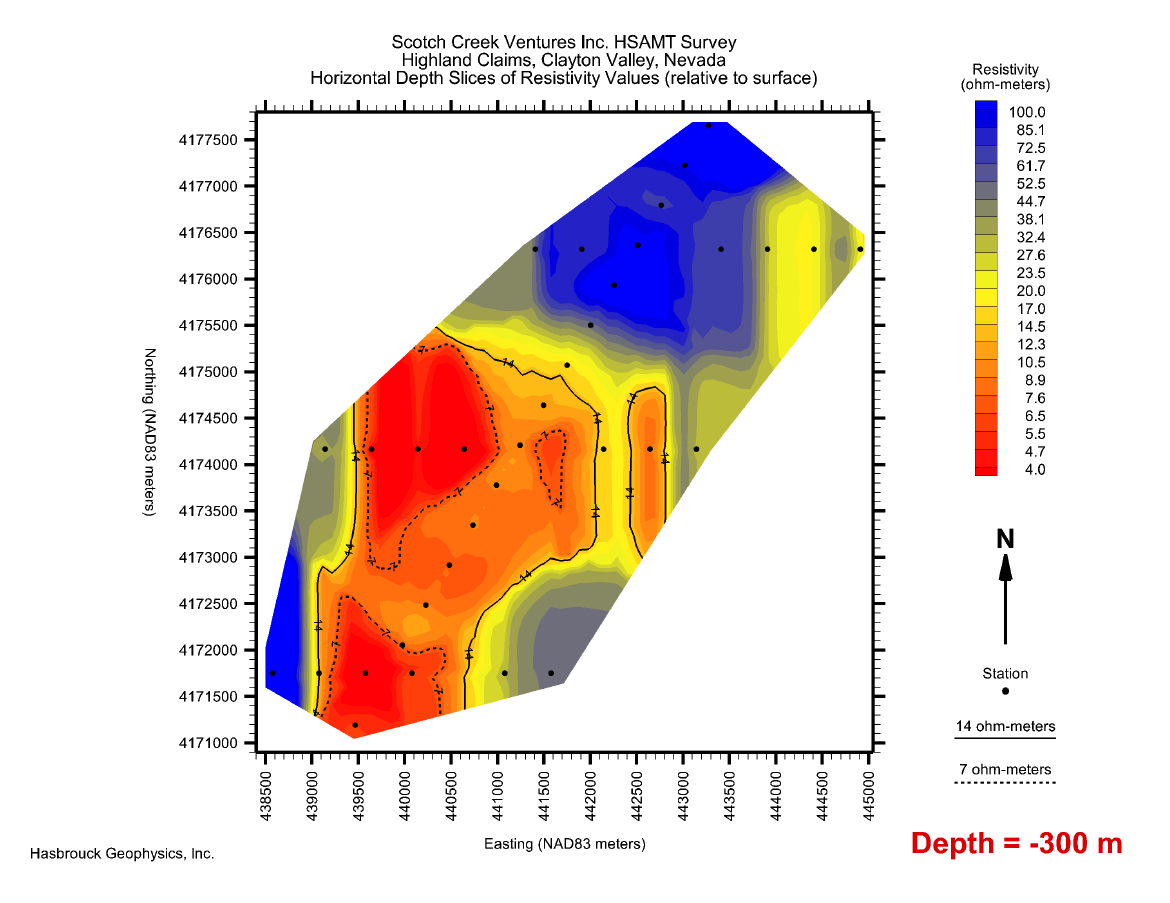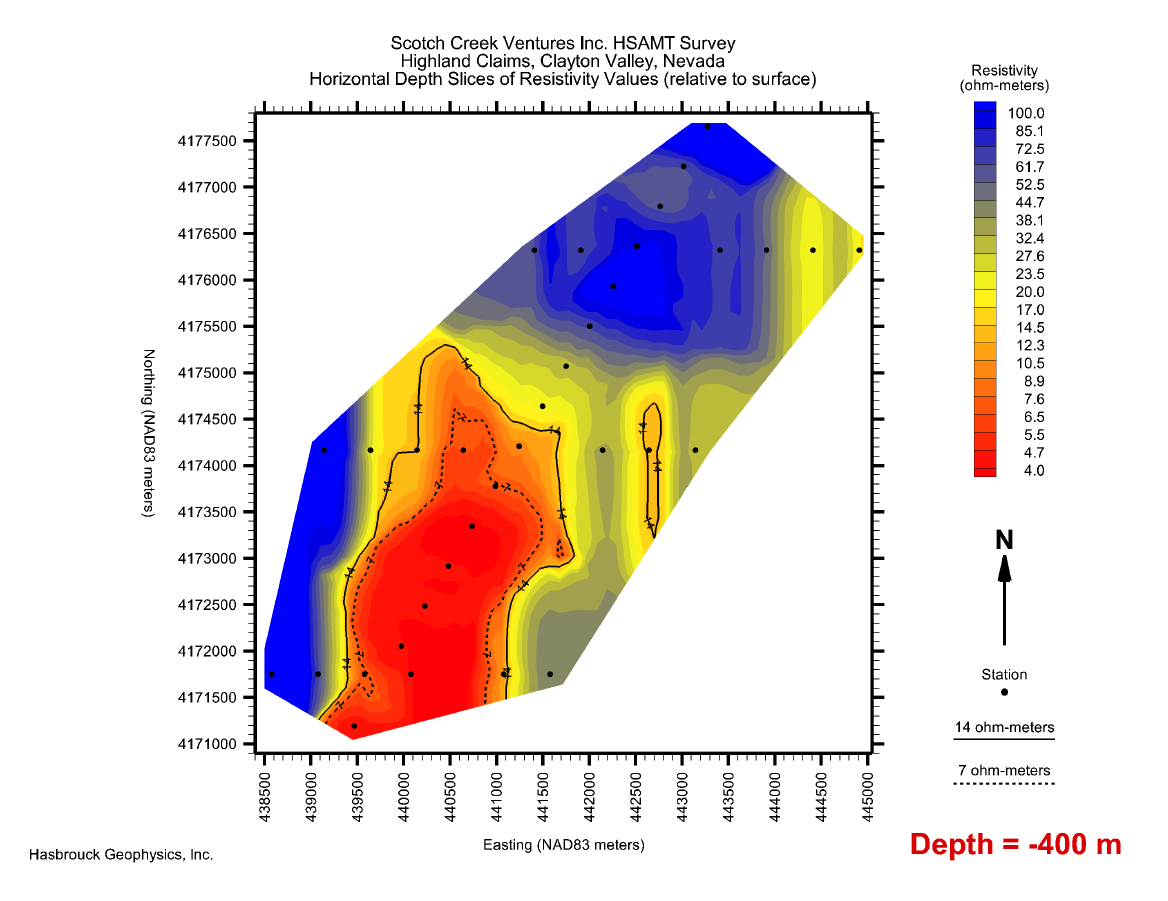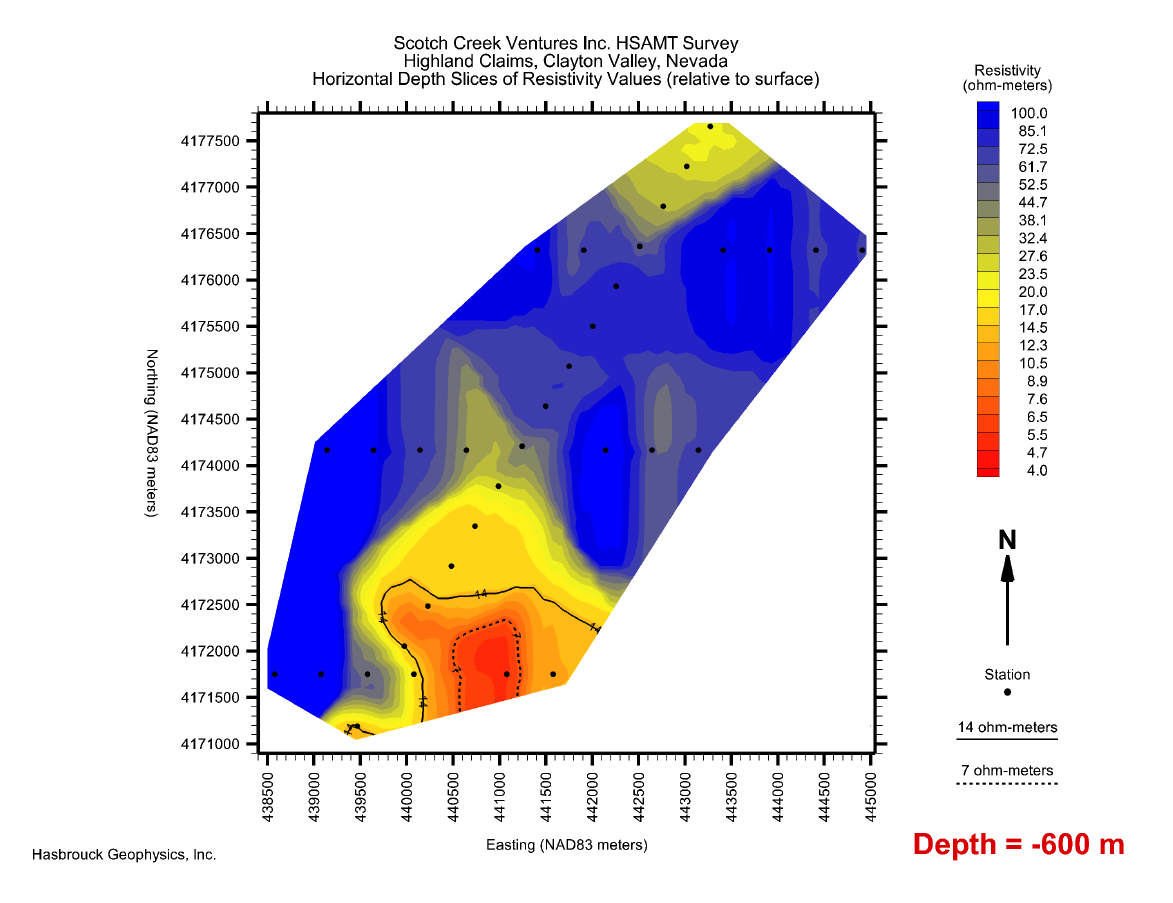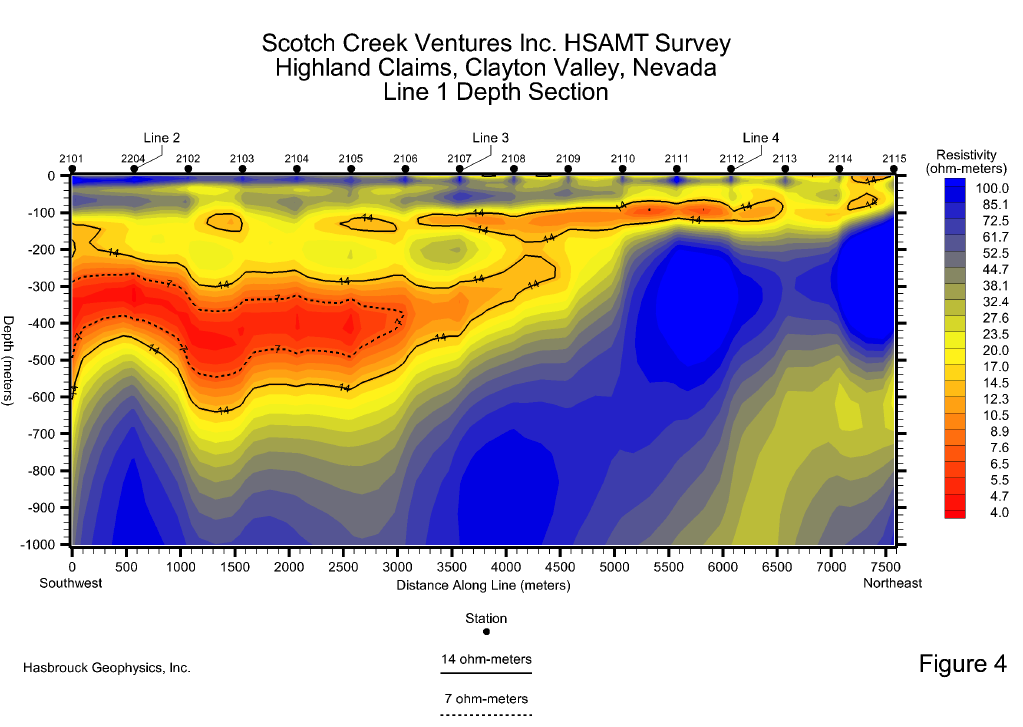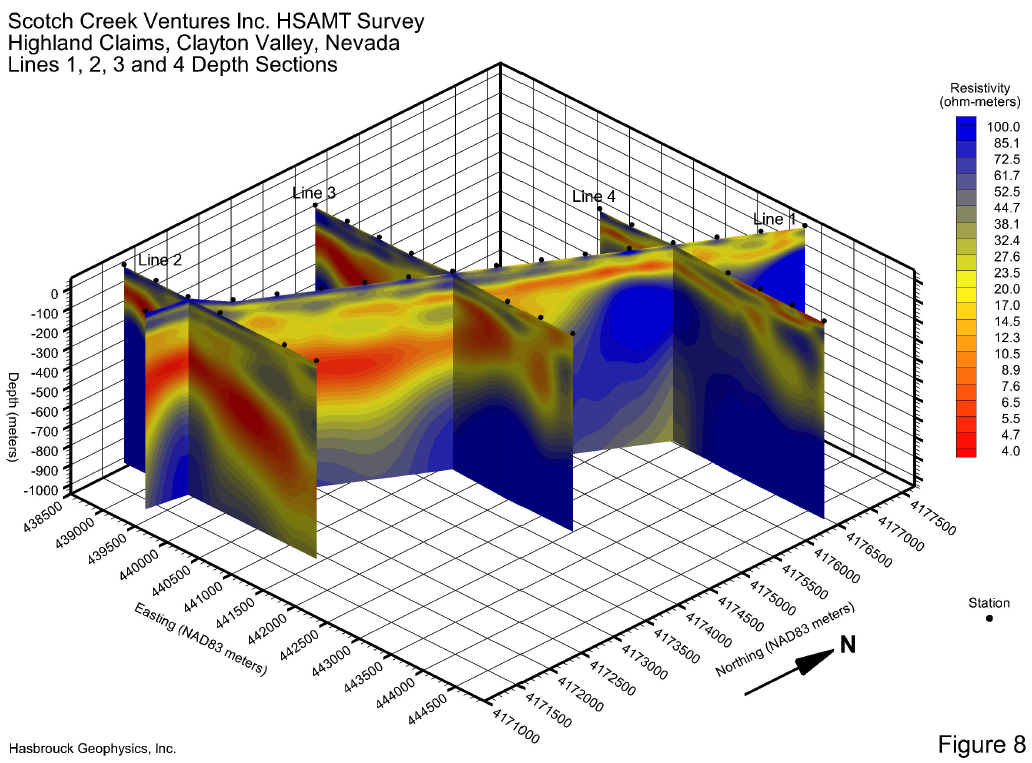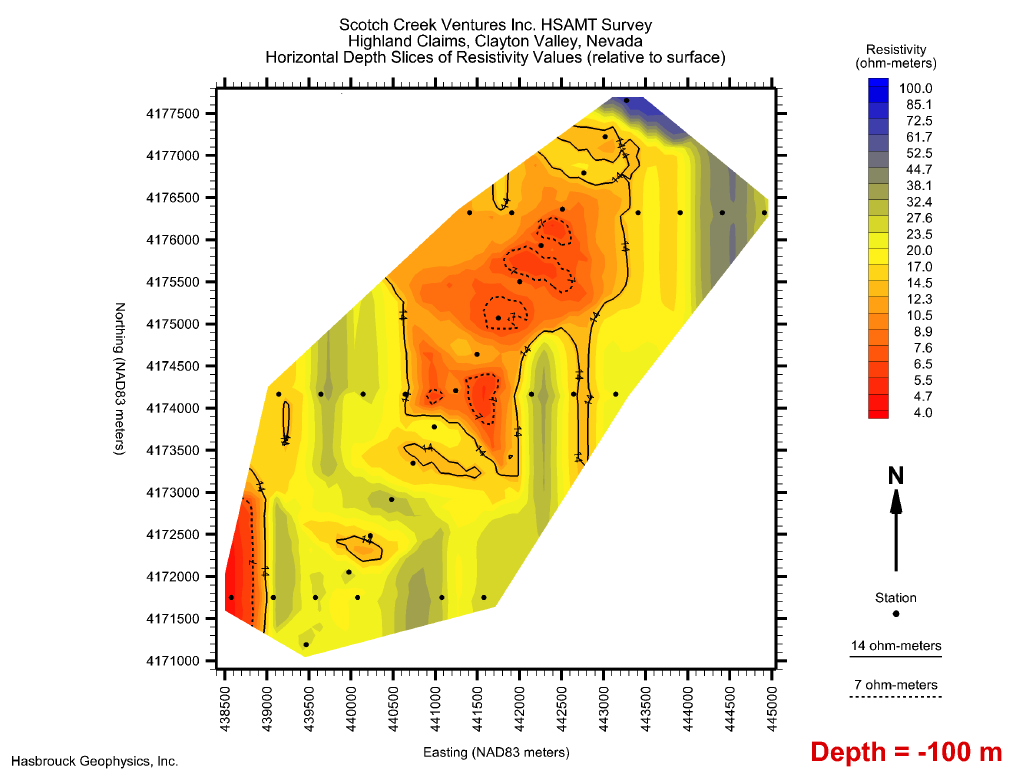
The Highlands Lithium project is within the southeastern portion of the Clayton Valley and is contiguous with lands owned by Pure Energy Minerals and Albemarle Corp. The valley contains a thick section of lake-bed sedimentary rock units that were deposited within paleo lake Esmeralda, a closed basin of late Miocene to recent age. Active faulting continues to drop down the basin against the basement rocks of the surrounding mountain ranges.
The term “closed basin” refers to the nature of the basin in that water enters the basin from precipitation on the surrounding mountains. The waters are trapped in the basin and have no rivers exit the basin, thus it is “closed”. Evaporation from the basin over millions of years has concentrated lithium and other salts within ground and basin filling, volcanic ash-rich sediments creating a world-class lithium concentration in the Clayton Valley.
The Clayton Valley is a lithium brine district hosted within the Esmeralda Formation, a sequence of lake basin-fill rocks that contain zones of volcanic ash-rich stratigraphy and salty evaporite units. Regionally, these Esmeralda rocks are of late Miocene to early Pleistocene age, in the range of 1 million to 5 million years before present. The Albemarle brine production field at Clayton is sourced from weakly to non- lithified volcanic ash horizons which have high porosity. The brines are pumped from these porous units contained within the upper portion of Esmeralda Formation lakebed sediments of the Clayton.

The presence of sandy, volcanic ash units within these rocks provides the host for lithium brine accumulation due to very high porosity. These units lack calcite cement and are seen as free-flowing “sugar sands” in the drill core. In these units, brine waters can accumulate in pour spaces within the sandy, ashy layers. Bounded above and below by low porosity, calcite cemented claystone, and mudstone, these meter to multimeter scale beds are the lithium brine resources of the Clayton Valley.
The Clayton Valley has the right topographic framework to receive lithium from groundwater and surface water sources and to hold it in place, permanently trapped in the basin. The hot, dry climate of the area has acted to continuously concentrate lithium through evaporation in a volcanic ash-rich, shallow lake environment.











